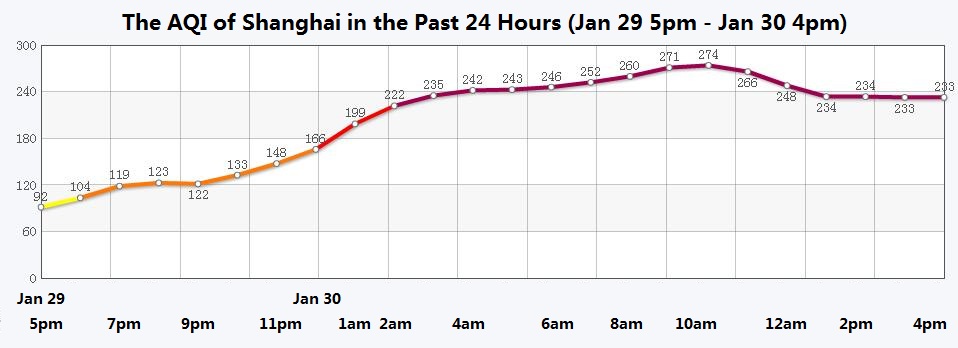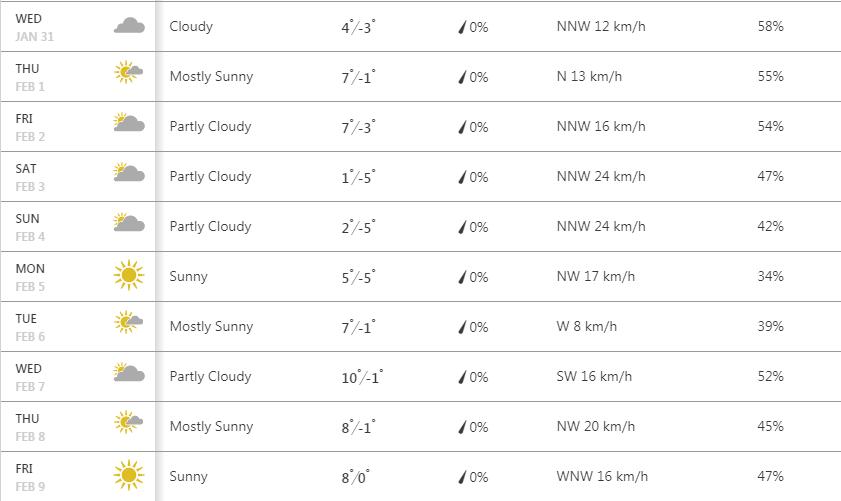After bidding farewell to the heaviest snowfall in the last five years, we were hoping this week would bring a clear sky and more mild temperatures. Unfortunately, it seems the cold weather is not ready to leave us yet, and ever heavier pollution has arrived.
This morning saw a sudden rise of pollutants as the AQI (Air Quality Index) went over 200, escalating to a high of 222 at 2am. As a result, the Shanghai Environmental Monitoring Center (SEMC) released their blue alert for air pollution at 7am, which is also the third alert for heavy air pollution of this year.
As usual, children, the elderly and those with heart and lung diseases are advised to stay indoors. Other citizens should also reduce outdoor activities. At the same time, industries such as steel, petroleum and chemicals, which tend to produce air pollutants, are ordered to reduce waste discharge and all construction work (except for emergencies) must cease.
The AQI appeared to have started declining from Tuesday afternoon. However, it is predicted that heavy pollution will return soon, escorted by a new cold front.

In addition to the pollution, Shanghai continues to be affected by the cold weather. Despite the sun trying to break through, the lowest temperature dropped down to -3 degrees Celsius, even lower than last week.
Shanghai triggered a yellow alert for frost at 4.16pm on Monday, January 29, suggesting that the lowest temperature will drop to -3 degrees Celsius or lower in the next 24 hours, which will have a continuous impact on agriculture.
In districts like Boashan, Minhang and Songjiang, the orange alert was raised, the most severe in the three-tier alerts for frost (blue, yellow, orange).
According to the Weather Channel, we still have a long way to go before we can say goodbye to the chilly days and heavy pollution. For now, all we can do is remember to put on our masks and warm clothes before leaving home, and stay indoors as much as possible.



















